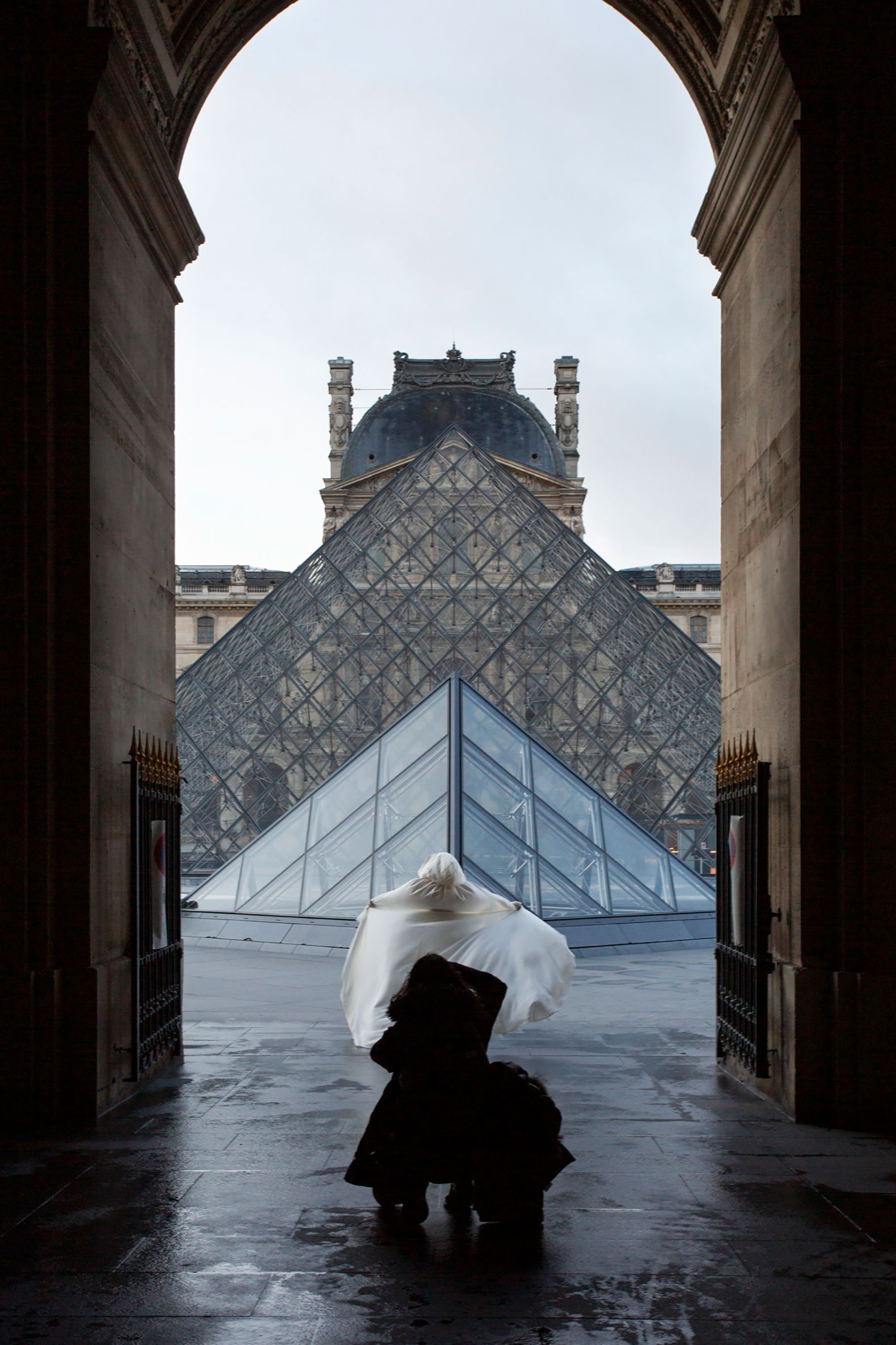The first major retrospective of Ieoh Ming Pei (1917–2019), "I. M. Pei: Life is Architecture" properly appraises for the first time the work of one of the greatest architects of the twentieth and twenty-first centuries.
Pei’s high-profile projects were realised over seven decades with an exceptionally wide geographic reach, including the National Gallery of Art East Building in Washington, D.C., modernisation of the Grand Louvre in Paris, Bank of China Tower in Hong Kong, and Museum of Islamic Art in Doha.
These iconic landmarks solidified Pei’s position in architectural history and popular culture. His life and work weave together a tapestry of power dynamics, geopolitical complexities, cultural traditions, and the character of cities around the world, and his transcultural vision laid a foundation for the contemporary world.

I. M. Pei: Life is Architecture at M+. A bride's photoshoot captured from Passage Richelieu at the Grand Louvre in Paris, 2021. Photograph by Giovanna Silva. Courtesy of M+.
The exhibition takes an expanded and closer look at Pei’s practice through six themes representing areas of focus and approaches throughout his career: ‘Transcultural Foundations’, ‘Real Estate and Urban Redevelopment’, ‘Art and Civic Form’, ‘Material and Structural Innovation’, ‘Power, Politics, and Patronage’, and ‘Regenerating Cultural and Historical Archetypes’. The themes place Pei’s practice in close dialogue with social, cultural, and biographical trajectories that show architecture and life to be inseparable.
The exhibition features a rich selection of drawings, sketches, videos, models, photographs, and other archival documentation, many of which will be on view for the first time. To lend a contemporary lens to Pei’s work, the exhibition presents newly commissioned photographs of Pei’s buildings by a new generation of photographers: South Ho, Naho Kubota, Lee Kuo-min, Giovanna Silva, Mohamed Somji, Tian Fangfang, and Yoneda Tomoko. Architectural models of Pei’s built and unbuilt projects are also made in collaboration with architecture schools at The University of Hong Kong and The Chinese University of Hong Kong.
Pei’s high-profile projects were realised over seven decades with an exceptionally wide geographic reach, including the National Gallery of Art East Building in Washington, D.C., modernisation of the Grand Louvre in Paris, Bank of China Tower in Hong Kong, and Museum of Islamic Art in Doha.
These iconic landmarks solidified Pei’s position in architectural history and popular culture. His life and work weave together a tapestry of power dynamics, geopolitical complexities, cultural traditions, and the character of cities around the world, and his transcultural vision laid a foundation for the contemporary world.

I. M. Pei: Life is Architecture at M+. A bride's photoshoot captured from Passage Richelieu at the Grand Louvre in Paris, 2021. Photograph by Giovanna Silva. Courtesy of M+.
The exhibition takes an expanded and closer look at Pei’s practice through six themes representing areas of focus and approaches throughout his career: ‘Transcultural Foundations’, ‘Real Estate and Urban Redevelopment’, ‘Art and Civic Form’, ‘Material and Structural Innovation’, ‘Power, Politics, and Patronage’, and ‘Regenerating Cultural and Historical Archetypes’. The themes place Pei’s practice in close dialogue with social, cultural, and biographical trajectories that show architecture and life to be inseparable.
The exhibition features a rich selection of drawings, sketches, videos, models, photographs, and other archival documentation, many of which will be on view for the first time. To lend a contemporary lens to Pei’s work, the exhibition presents newly commissioned photographs of Pei’s buildings by a new generation of photographers: South Ho, Naho Kubota, Lee Kuo-min, Giovanna Silva, Mohamed Somji, Tian Fangfang, and Yoneda Tomoko. Architectural models of Pei’s built and unbuilt projects are also made in collaboration with architecture schools at The University of Hong Kong and The Chinese University of Hong Kong.


























